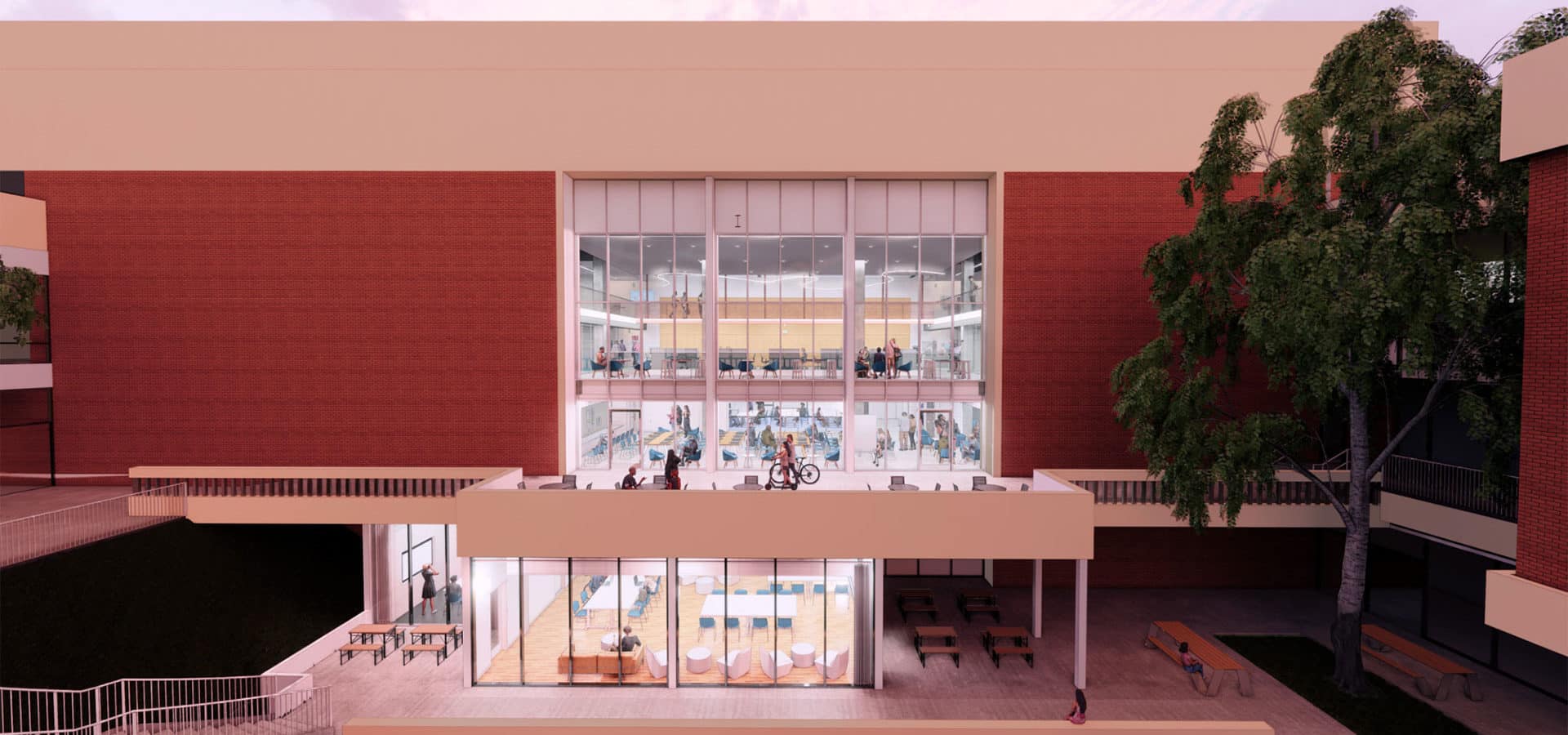A-Block, the wing of CalArts’ Main Building that has been the stomping grounds for decades of storied animation artists—including such highly accomplished filmmakers as Tim Burton, Lauren Faust, Jorge Gutierrez, Pete Docter, John Lasseter, and Brenda Chapman—was struck by a unique tragedy on June 5, 2021. It was on a quiet Saturday when a decades-old cooling tower located on the fifth floor malfunctioned and overflowed, causing a substantial amount of water to spill down into the spaces below.
Thankfully, nobody was injured. But the place where hundreds of current undergraduate and graduate students hone their crafts—including A221 and A115 that are used by the Institute’s two renowned animation programs, Character Animation and Experimental Animation, as well as The Herb Alpert School of Music’s famed Gamelan Room—was rendered completely unusable.
“I remember essentially watching ‘rain’ falling in three of the faculty offices,” Abigail Severance, the dean of the School of Film/Video, said about that day.
This devastating event presented administrators, particularly Severance and the School of Film/Video’s Director of Technology and Operations Nathan Crow, with an unenviable predicament. Suddenly, they would need to find a new space for their hundreds of animation students to work during the upcoming fall 2021 semester and beyond. Luckily, a suitable spot was found at the former Princess Cruise Corporation offices in the Valencia Town Center just a few miles from campus. That space, among other things, once held a small-scale replica of television’s famous “Love Boat.”
In the meantime, A-Block needed to be rebuilt. There was a silver lining to this tragedy, however: The flood presented an opportunity to remake a long-outdated facility, replacing it with a modern 21st-century workspace designed to meet the needs of current-day animators. Severance and her team got to work. But first they wanted to be sure that the redesigned space would support the development of their artists and help to set them up for success in the future. With that in mind, the team consulted with a major animation studio as well as with students, faculty, and staff in both the undergraduate and graduate Character Animation and Experimental Animation programs.
“We got some really terrific support from the administration to evaluate what our needs for these two really important programs are,” Crow said.
Their careful evaluation has led to a thoughtful and intentional new design for A-Block that takes into account three main priorities: creating a space that is flexible and adaptable based on current and future needs; ensuring that the space artfully incorporates technology; and making certain that the well-being of students is considered by incorporating a variety of environments, including natural light, community gathering spaces, as well as quiet spaces.
Phase one of the A-Block’s construction is scheduled for completion in May. And while the new offices and cubicle spaces may not have the historic, “lived in” charms that it once contained, the updated and modern A-Block stands ready for students to make art and films that will become part of CalArts’ grand legacy.
Listen to the “Beyond the Blue Wall” episode about A-Block’s reconstruction below.







